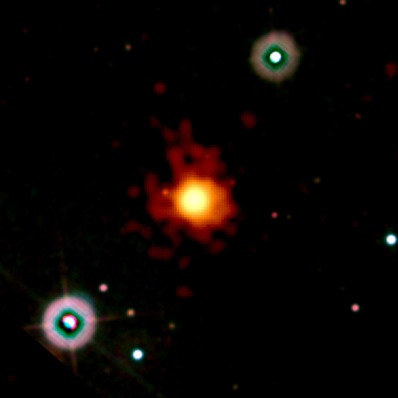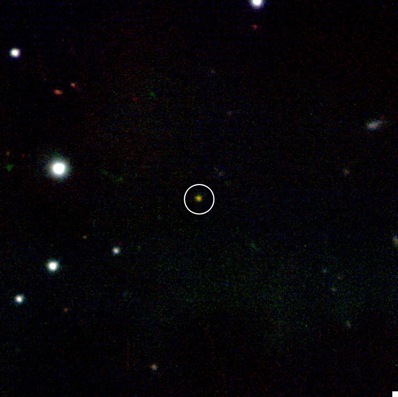|

Top Stories

|

|
 |
 |



Solar wind tans young asteroids
...Unlike human skin which is damaged by prolonged exposure to sunlight over a lifetime, an asteroid's surface is aged in the first instances of its life...
read more

Kepler's first view of planet hunting territory
...NASA's Kepler spacecraft has opened its eyes and blinked at the rich star field where it will search for extraterrestrial planets like Earth...
read more

Hubble witnesses flaring in black
hole jet
...A flare of matter blasting out from a monster black hole is outshining even the core of its host galaxy, M87...
read more |
 |
 |

|
Spaceflight Now +

|

|
 |
 |

Subscribe to Spaceflight Now Plus for access to our extensive video collections!
 How do I sign up? How do I sign up?
 Video archive Video archive

STS-120 day 2 highlights

Flight Day 2 of Discovery's mission focused on heat shield inspections. This movie shows the day's highlights.

 Play Play

STS-120 day 1 highlights

The highlights from shuttle Discovery's launch day are packaged into this movie.

 Play Play

STS-118: Highlights

The STS-118 crew, including Barbara Morgan, narrates its mission highlights film and answers questions in this post-flight presentation.

 Full presentation Full presentation
 Mission film Mission film

STS-120: Rollout to pad

Space shuttle Discovery rolls out of the Vehicle Assembly Building and travels to launch pad 39A for its STS-120 mission.

 Play Play

Dawn leaves Earth

NASA's Dawn space probe launches aboard a Delta 2-Heavy rocket from Cape Canaveral to explore two worlds in the asteroid belt.

 Full coverage Full coverage

Dawn: Launch preview

These briefings preview the launch and science objectives of NASA's Dawn asteroid orbiter.

 Launch | Science Launch | Science

 Become a subscriber Become a subscriber
 More video More video

|
 |
 |

|
|
 |

Gamma-ray burst bellows from depths of the Universe
BY DR EMILY BALDWIN
ASTRONOMY NOW
Posted: 29 April, 2009
A spectacular gamma-ray blast from the past has made it into the record books as the most distant object in the Universe, located 13 billion light years away.

Data from Swift's Ultraviolet/Optical (blue, green) and X-Ray (orange and red) telescopes are merged in this image. No visible light accompanied the burst, which alone suggests great distance. The image is 6.3 arcminutes across. Image: NASA/Swift/Stefan Immler.
Detected by NASA’s Swift satellite on 23 April, the ten-second long gamma-burst from GRB 090423 was observed by an international team of astronomers as it faded into an X-ray afterglow. No detections in visible light were made. “That alone suggested this could be a very distant object,” says Edo Berger of Harvard University, a leading member of the team that pinpointed the burst’s origin. “The visible light was completely absorbed by hydrogen gas in the early Universe, but the GRB was brightly glowing in the infrared images. If you look far enough away, you can’t see visible light from any object.”
The observations reveal that the explosion occurred when the Universe was just 630 million years old, direct proof that the baby Universe was alive with exploding stars and newly born black holes. “This new gamma-ray burst smashed all the records,” says Berger. “It easily surpassed the most distant galaxies and quasars. In fact, it showed that we can use these spectacular events to pinpoint the first generation of stars and galaxies.”

The fading infrared afterglow of GRB 090423 appears in the centre of this false-color image taken with the Gemini North Telescope in Hawaii. Image: Gemini Observatory/NSF/AURA, D. Fox and A. Cucchiara (Penn State Univ.) and E. Berger (Harvard Univ.)
Gamma-ray bursts typically occur once massive stars have run out of nuclear fuel, collapsing into a black hole or neutral star and punching out jets of gas through the shells of gas expelled by the star as it reached the end of its life. These jets heat up the gas to generate the short-lived afterglows observed in other wavelengths. “Burst afterglows provide us with the most information about the exploded star and its environs,” says Nial Tanvir of the University of Leicester. “But because afterglows fade out so fast, we must target them quickly.”
Tanvir and colleagues detected an infrared source within three hours of the burst using the United Kingdom Infrared Telescope on Mauna Kea in Hawaii. At the same time, Berger and Derek Fox at Penn State University led an effort to obtain infrared images of the afterglow using the Gemini North Telescope on Mauna Kea.
The astronomers noticed that the source was present in the longest wavelength images, but was absent in the shortest wavelengths of one micron. The “drop-out” corresponds to a distance of precisely 13.035 billion light-years, or redshift 8.2, making it the most distant object ever seen by humanity. The previous record holder was found just last September, but at red shift 6.7, or distance of 190 million light years, GRB 090423 clearly sets a new precedent.
|
 |
 |
 |
|
|



